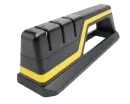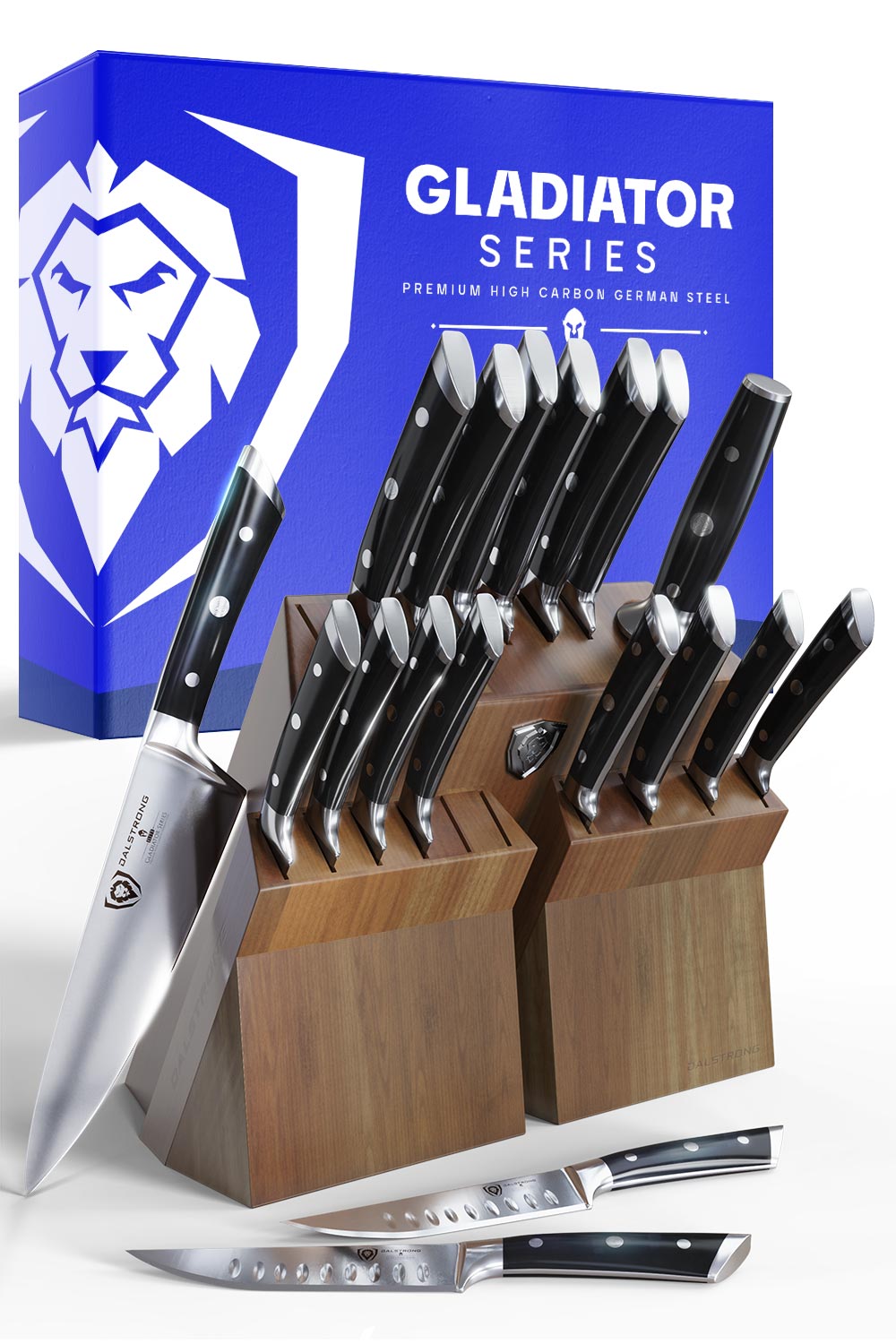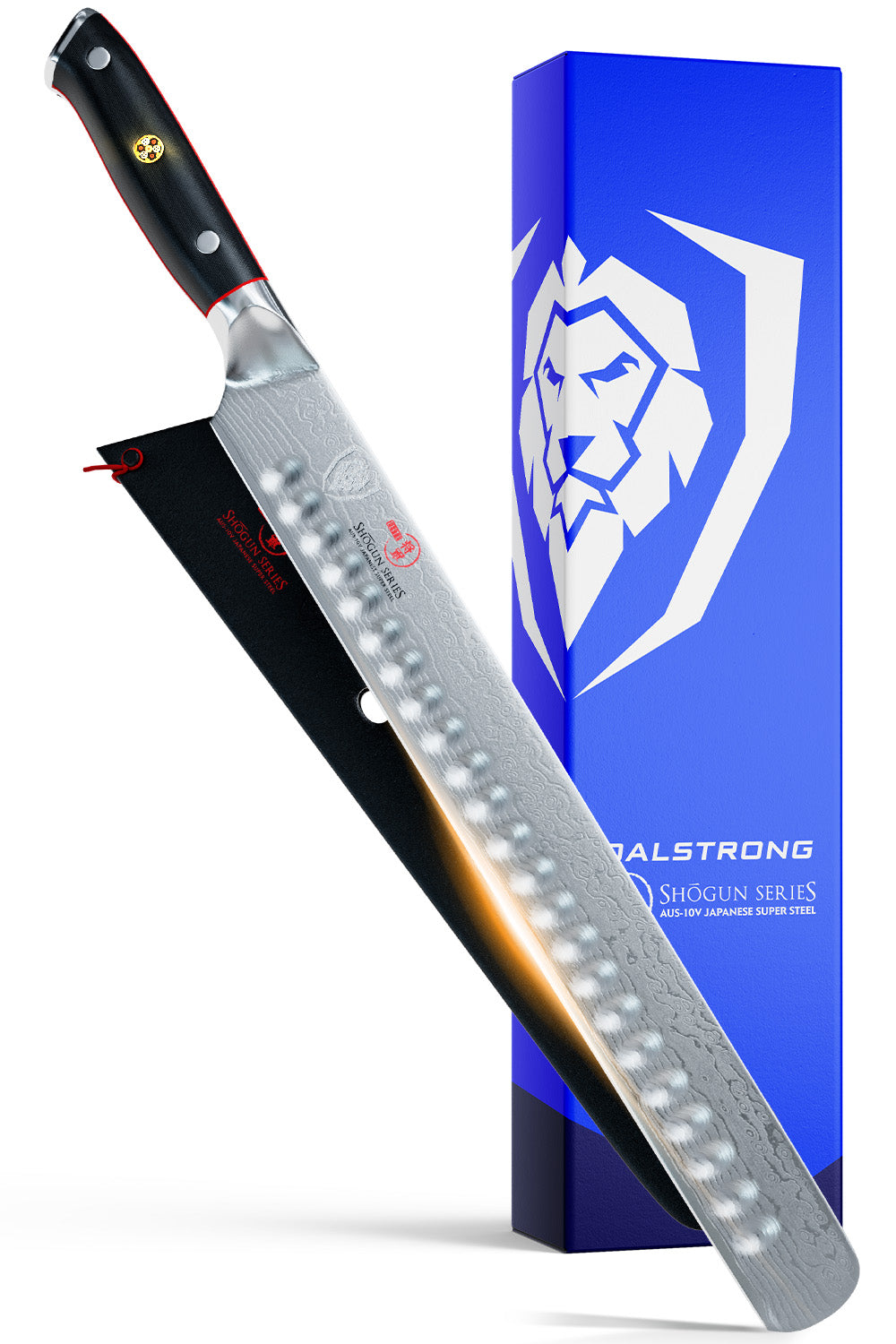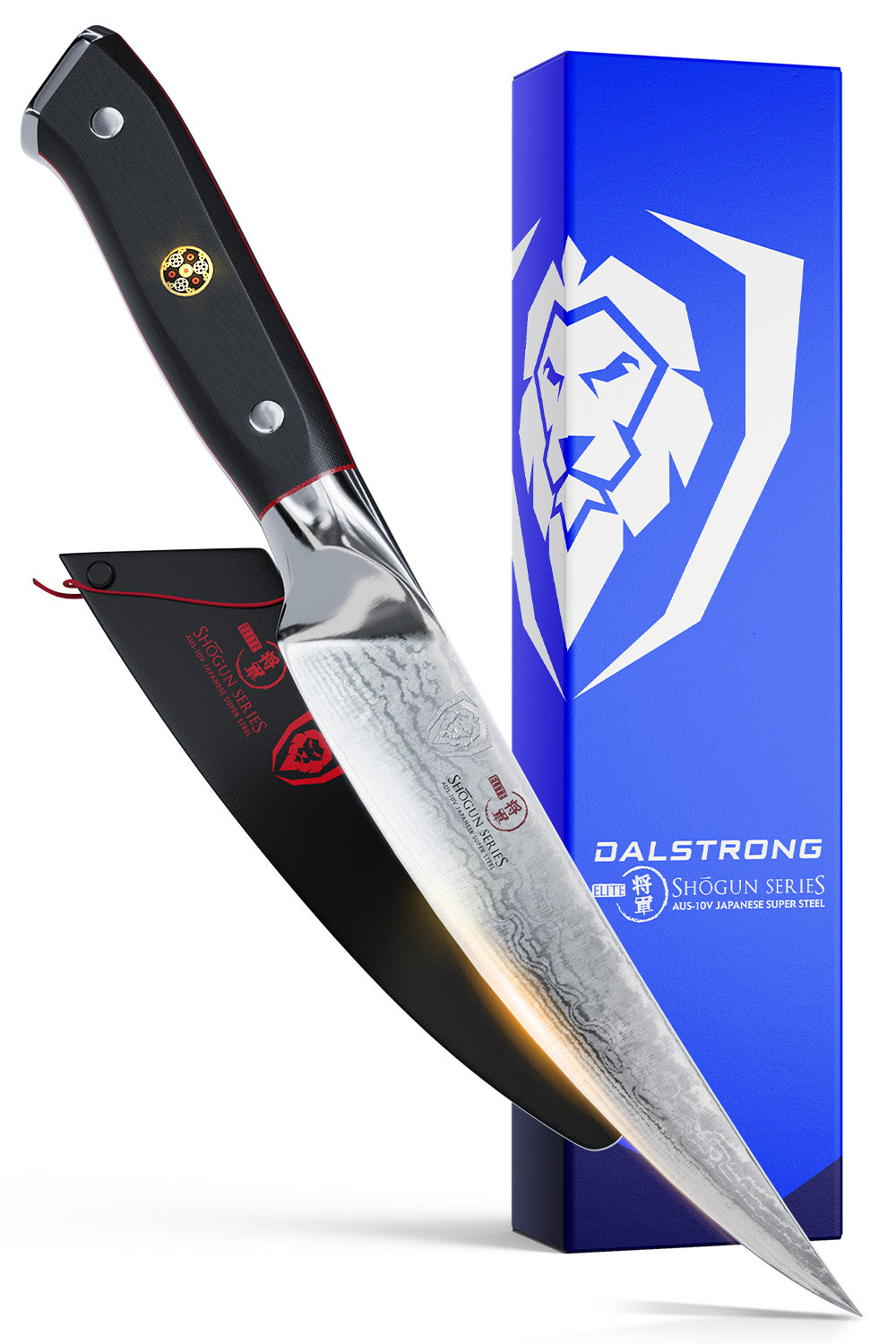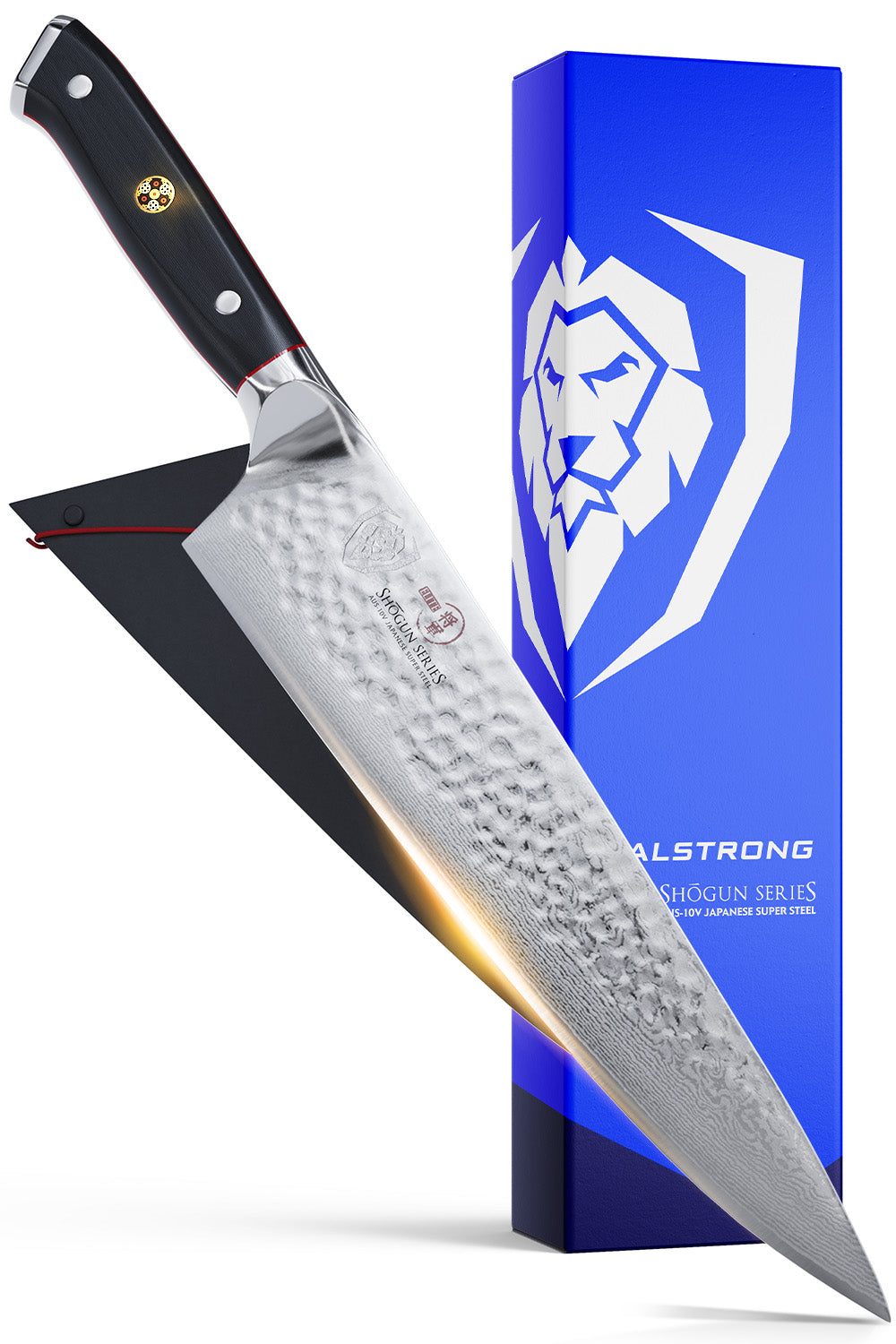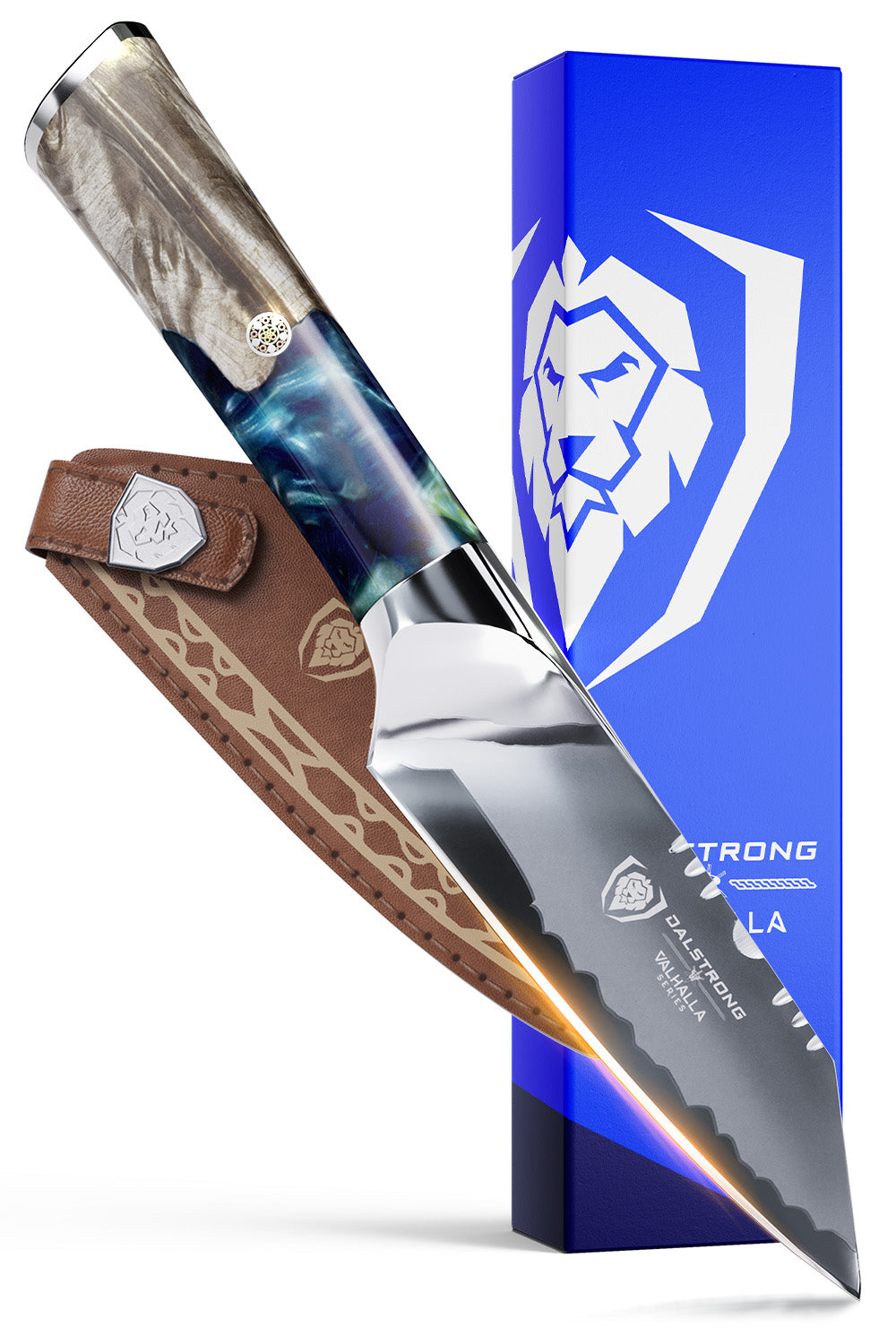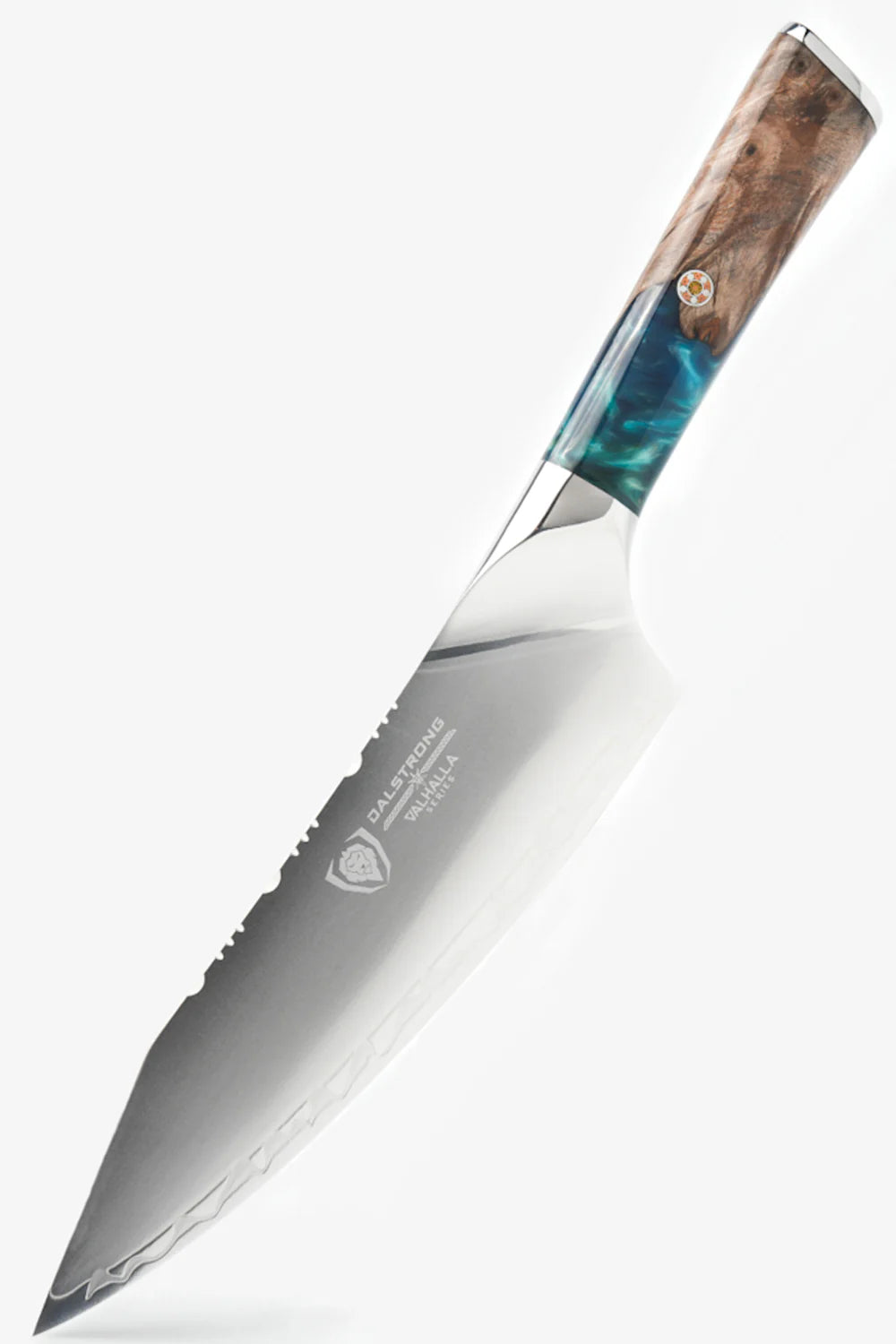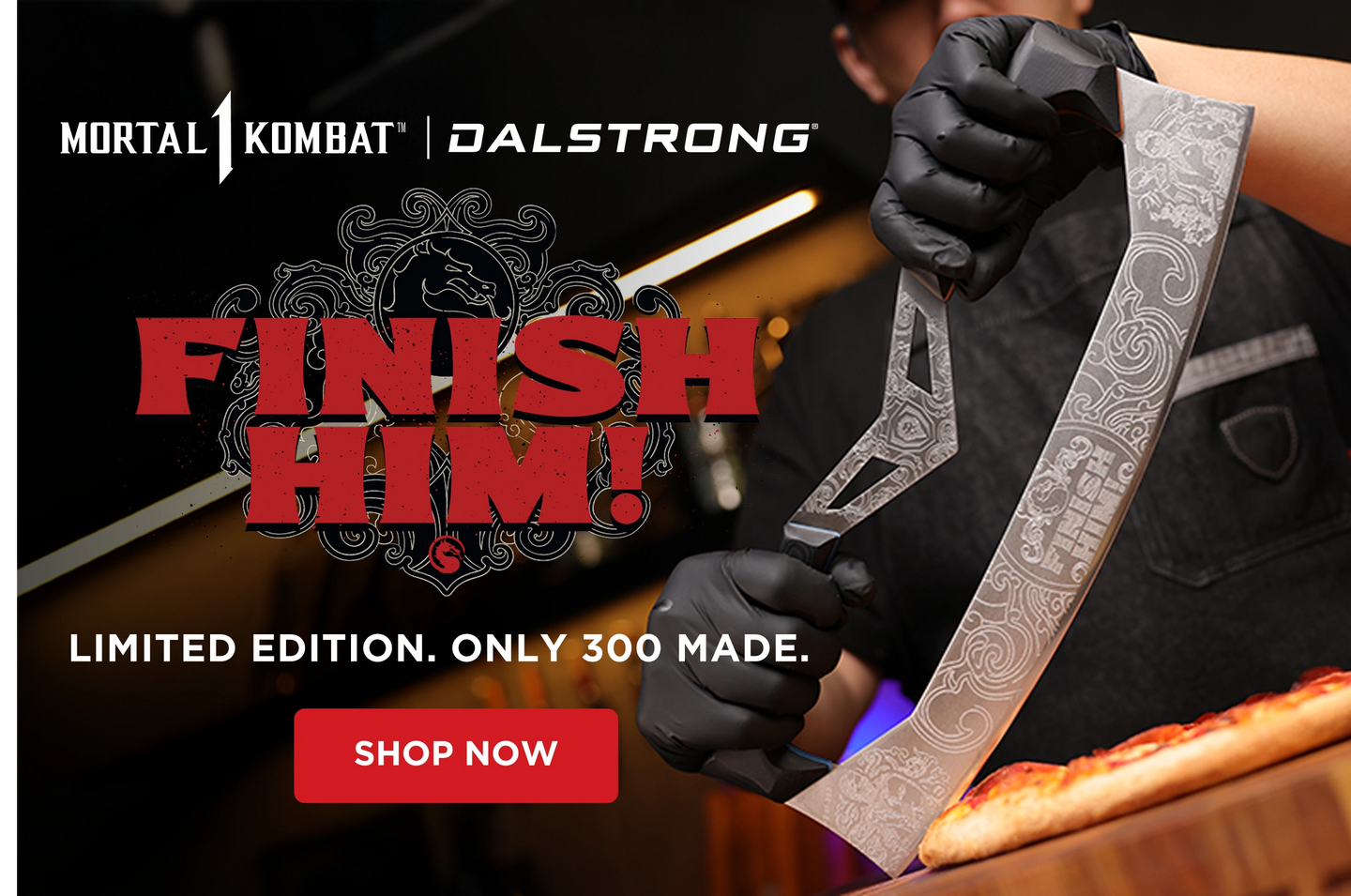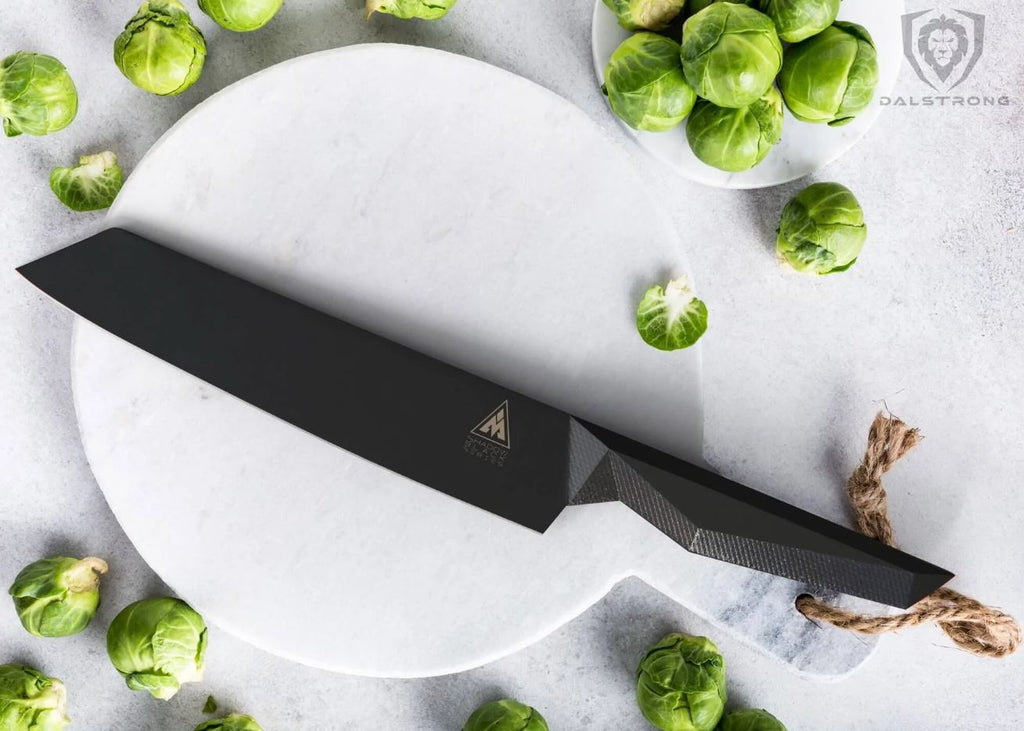 Kiritsuke Chef's Knife 8.5"Shadow Black Series | NSF Certified | Dalstrong
Kiritsuke Chef's Knife 8.5"Shadow Black Series | NSF Certified | Dalstrong
A Kiritsuke is one of the most interesting Japanese knives: extremely sharp and multipurpose. But what is it exactly? Is it a Japanese chef's knife? What is a Western Kiritsuke? Let us read about this wonderful and versatile blade.
Japanese knives are a statement on their own. They’re admired all over the world for being extremely sharp, precise and delicate at the same time.
But the Japanese, meticulous as they are, have designed several beautiful blades designed to excel at specific goals. One may feel lost among the many options, especially coming to the -more “multipurpose” oriented- Western approach.
It’s already enough that we have to learn the deeds from specialty knives like bread knives, oyster knives, cheese knives, fillet knives or steak knives… now we have learned a whole new vocabulary for the other side of the world.
Maybe you’re flirting with the century-long world of Japanese kitchen knives, maybe you just like sushi, maybe you’re just curious. Whatever your reason, you’re reading this because you want to know what a Kiritsuke is and how it is different from your old acquaintance the Chef’s knife. Without further ado, let’s get to it!
Kiritsuke Chef's Knife 8.5" | Crusader Series
1. What Is Kiritsuke Knife?
A Kiritsuke knife is a hybrid between two Japanese knives: a Yanagiba (long and thin sushi, sashimi knife) and a Usuba (designed for vegetables). This blend makes it a very versatile knife, one of the few Japanese knives that’s actually multipurpose.
The word Kiritsuke means “slit open” in Japanese.
The traditional version of this kitchen knife features a single bevel, straight edge blade and a flat, sword-like front end. Modern versions can also be double-beveled, offering extra versatility.
The length can vary and you can find a Kiritsuke 210mm, a Kiritsuke 240mm, all the way to 330mm. They are usually made of high carbon steel (like blue steel, Agami super), Damascus steel, or even stainless Damascus and Damascus cladding.
This geometry allows for push-cuts over rocking motion, and therefore, a great variety of uses, comparable to a Western chef’s knife.
In traditional Japanese cuisine, owning a Kiritsuke knife is a symbol of status and in professional kitchens, only the Executive Chef will use a Kiritsuke.
2. What Is A Kiritsuke Knife Used For?
Because it combines two of the best Japanese blades; a Kitirsuke knife is great for slicing super thin slices of raw fish (for sashimi, for example) and other seafood. It’s also used for fileting skinned fish.
But it’s also used for cutting or slicing any types of vegetables, including ones which require a special type/way of cutting, like pumpkins, tomatoes, cucumbers, leek… if you’re a vegetarian, for example, you’ll probably find a great ally in a Kiritsuke.
That is not all, though. You can chop herbs, slice meats, dice or julienne using a Kiritsuke. In general, whether you use a Kiritsuke 210mm or a Kiritsuke 240mm this knife is capable of the thinnest, most delicate cuts, preserving the freshness of the food.
The slightly concave side of the blade brings its “non-stick” feature, which means that these thin slices of food won’t be sticking to the knife.
3. Chef's Knife Vs. Kiritsuke Knife
Even though a chef’s knife and a Kiritsuke knife have different origins, applications, designs, sizes and shapes; people often compare the two because they’re both considered “master” knives and they’re both widely used in professional kitchens.
However, they’re not the same. A Kiritsuke is not even the Japanese equivalent of a chef’s knife (the gyuto is the Japanese chefs knife). Here are a few differences between the two:
SHAPE
The blade of a Kiritsuke is thinner and longer than a chef’s knife. A chef’s knife has a curvature on the blade, while the Kiritsuke’s blade is straighter.
USES
Even though both knives are very versatile and can be used either for fish, meat and vegetable; it is clear that a Kiritsuke excels at the fish business.
BEVEL
Even though nowadays there are double-beveled versions, the traditional Kiritsuke is single-beveled. Chefs knives are always double-beveled.
DIFFICULTY
The kiritsuke is anything but beginner-friendly (more on that later). While the chef’s knife, even if it will require a bit of know-how, it doesn’t compare to the technique required by the Kiritsuke.
PRICE
In general, a kiritsuke knife is more expensive than a chef’s knife.
4. How To Use It?
So far we’ve explained the wonders of a Kiritsuke sword and why you should have one if you’re serious about your cooking. But there is one small detail about this knife that, while it is not necessarily a disadvantage, it should be taken into full consideration.
A kiritsuke is not a knife that’s easy to use. You will need to do some homework, learn the technique, and ideally practice a few times before you get into the zone. We’re not saying this lightly: this Japanese knife is extremely sharp and it’s a matter of safety more than comfort.
As we said before, in a traditional Japanese kitchen this is an elite tool reserved for head chefs only.
But we don’t want to scare you! On the contrary, we believe if you read this far it’s because you’re genuinely interested and up to the challenge. And once you get the hang of it, you’ll be amazed by its power.
Tips and tricks:
- Position the feet. Yes you read that right: the feet. Keep one foot always to the side and back, to give your arms more freedom to move.
- Use a pinch grip. This is the go-to grip for a kiritsuke. A pinch grip consists in placing the index and thumb on the bolster. The rest of the fingers can be placed along or around the handle.
- No rocking motion needed. Always push the knife downwards and away from your body, then upwards towards your body.
- Use the special-shaped tip for thin cuts and slices.
- Keep the knife sharp with regular sharpening.
- Use a firm, sturdy cutting board that won’t move when you’re cutting.
5. Recommended Kiritsuke Knives
1. Kiritsuke Chef's Knife 8.5" | Collector Set | Omega Series
Let’s start at the top! This kiritsuke is a true homage to Japanese blades. Thought for fearless chefs and ambitious cooks. High performance, ultra premium steel, efficiency, resistance and… beauty.
PROS:
- Hyper steel with a vacuum treatment and additional nitrogen, forged using the 3-step Honbazuke method.
- Hardness and flexibility are both fantastic features in this Kiritsuke blade.
- The ‘Liquid Metal” pattern is not ornamental: it minimizes food drag.
- The midnight black handle will endure heat and wear.
- The handle is also ergonomic for extra control, something that definitely comes in handy while maneuvering with this challenging knife.
- Scalpel-like sharpness.
CONS:
- The price is a bit high (but still within what’s expected for an exclusive knife like the Kiritsuke).
- This model may feel heavy for those who prefer lightweight knives.
2. Kiritsuke Chef's Knife 8.5" | Crusader Series
On the other end of the spectrum, we find a rare thing: an affordable, high-quality kiritsuke knife. So if you dream of having the ultimate multi-purpose knife but your budget hasn't allowed it, this is the best news you’ll get today.
PROS:
- Double-bevel for even more versatility (a double beveled kiritsuke is not the norm, so this is a considerable advantage).
- I consider the clean, minimalist aesthetic of the Crusader Series to be a pro.
- Razor-sharp German steel.
- The groove running along the knife improves balance and reduces friction.
- It comes with a hand-crafted blade sheath with an engraved magnet.
- Easier cleaning: the special handle design leaves no room for debris!
- Unbelievably affordable for a Kiritsuke.
CONS:
- Far from the traditional wood handle, this model has its fans… and its detractors.
- If you have a more traditional or rustic-looking kitchen, the minimalist design might stand out a bit too much.
3. Kiritsuke Chef's Knife 9.5" | Phantom Series
Longer than the previous options, and with a straighter edge, this knife from the Phantom Series is a great option for those who want more, but not too much. I really like the passive elegance of this series and I think it suits the Kiritsuke quite well.
PROS:
- The geometry is perfect for push-cuts, slicing fish and chopping vegetables.
- Hand sharpened to 13-15 degrees (Honbazuke method).
- Traditional Japanese D-shaped handle.
- The polished spine makes the pinch grip (recommended when using a Kiritsuke) easier.
CONS:
- It feels more like a chef knife with the aesthetic of a Kiritsuke than an actual Kiritsuke, but that is exactly what some people are looking for.
- Some may prefer the 8.5” size.
4. Kiritsuke Chef's Knife 8.5 | Shadow Black Series
If owning a Kiritsuke is not milestone enough for you, if you want even more “flash” in your kitchen, then I suggest you go with the Shadow Black Series. You’ll feel like it’s Christmas and you just got the Batmobile.
PROS:
- Nitrogen cooled for even more hardness and flexibility.
- Titanium Nitride non-reflective coating (enhances non stick properties).
- Hand polished and full tang blade.
- The geometry of the handle is unique and it’s slightly textured, making the grip a bit more comfortable.
- It comes with a matching black sheath.
- NSF certified.
- The total-black design is really a statement.
CONS:
- More conservative people can find the design a bit too aggressive for their style.
- Unless you buy the whole series, it can be difficult to match with other knife sets.
5. Kiritsuke Chef's Knife 8.5" | Shogun Series
The Kiritsuke from the Shogun Series is a reliable sword with a solid performance. It’s meant to endure long hours of chopping and slicing, every day and several days a week; but also to excel at your occasional sushi night. By the way, it’s also gorgeous.
PROS:
- Double-beveled: easier to use, easier to maintain.
- Super-steel core with 66-layers of extra high-carbon stainless steel cladding.
- Dalstrong’s exclusive ‘Tsunami Rose’ pattern on the blade is just magnificent.
- The handle is constructed of G-10 Garolite (military-grade) and is impervious to heat and moisture, stabilized with an engraved end-cap.
- The mirror polished bolster and the blade’s spine are there to improve the pinch grip and therefore, improve your Kiritsuke experience.
CONS:
- High carbon, hard and super sharp as it is, will also require extra knife care against possible rust.
- You may be looking for something a bit more “modest” to start with.
6. Frequently Asked Questions About Kiritsuke Knives
Why is Damascus steel used for Kiritsuke knives?
It’s pretty common to find Damascus Kiritsuke knives. Damascus stainless steel offers many advantages like toughness, sharpness and a beautiful distinctive pattern. Besides Damascus Kiritsukes, carbon steel is another great option.
What is blue steel and white steel?
Some Kiritsuke knives come in blue steel #1. This is an alloy where tungsten and chromium are added to iron and carbon. Some say this is the ideal steel for Japanese knives. There is also “aogami super” steel, with even more carbon, chromium, tungsten and Molybdenum.
How do you sharpen a Kiritsuke?
Sharpening Japanese knives can be a little tricky. It is always recommended that a knife like the Kiritsuke chef knife gets sharpened by professionals that know their way around knife sharpeners and sharpening stones. You can still do the job yourself if you learn the technique and look for high-quality sharpening kits.
What is a Kiritsuke Gyuto?
A “Kiritsuke Gyuto” usually refers to the Kiritsuke version that is double-beveled. The traditional version, referred to simply as “Kiritsuke” is single beveled.

































